David Boseto
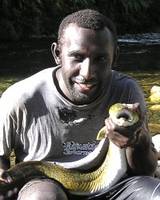 Degree: Master of Science in Marine Science
Degree: Master of Science in Marine Science
Title: Diversity distribution and abundance of Fijian freshwater fish
Principal Supervisor: Prof. William Aalbersberg
Status: Completed
Abstract:
One of the poorly known aspects of the biodiversity of the Fijian Islands is the biodiversity of freshwater fauna. Data collected from this study were used to compile a checklist of Fijian freshwater and estuarine fish, determine the physical habitat factors influencing richness and abundance and identify biogeographic patterns including fish communities and assemblages found in different regions and habitat.
In this survey, gill net, cast net, beach seine net, fine mesh net, pole seine net, hand net, spear gun, electro fisher machine, visual observation and hand gleaning were the techniques employed to document freshwater fish during the period of October 20th 2002 to October 10th 2004.
Freshwater fish surveys were carried out in 66 sites in seven watersheds on the islands of Viti Levu, Vanua Levu and Taveuni. There are 40 sites in Viti Levu, 5 sites in Vanua Levu and 21 sites on Taveuni.
The field surveys resulted in the collection of 2,615 fish specimens from 31 families and 76 species. Data from previous surveys and museum collections identified 151 species from 41 families. Taking into account overlap between field data and other collections, there are 89 known freshwater fish species from 26 families in Fiji. Furthermore, 72 estuarine fishes from 31 families were recorded from previous data and during this field survey which gives a total of 161 freshwater/estuarine fish species from 45 families in Fiji.
This study has contributed 11 new records and a new genus to the total number of brackish and freshwater fishes of Fiji. The new speciesare Glossogobius sp., Redigobius sp., Sicyopus (c.f. Juxtastiphodon) sp., Stenogobius sp., Stiphodon sp. 1, Stiphodon sp. 2 and Sicydiinae: new genus and new species. One of the new species was already described by Jenkins and Boseto (2005) as
Schismatogobius vitiensis. The new records are Yirrkala gjellerupi, Gerres longirostris, Lentipes
kaaea and Belobranchus belobranchus.
The “Inter Quartile Range” and multiple regression analyses were used to analyse the data collected from this survey. “Inter Quartile Range” analysis was used to describe how common were the fish species caught from the different sites collected during this survey, other collections and the combine collections. Multiple regression analyses were used to examine the relationships between physical habitat characteristics and freshwater fish species richness and abundance.
SPSS Version 11.5 for Windows was used for all analyses and α was set at 0.05 for all analyses. Anguilla marmorata (Anguillidae) was the most common species collected during this survey. The common species after combining all the collections are Anguilla marmorata (Anguillidae), and Kuhlia rupestris (Kuhliidae). The moderate to occasionally common and the least common fish species of the combined collections are in Appendix 6.
This study shows species richness depends on physical habitat factors, mainly water temperature and river depth for total number of fish species and number of native species and distance from the coast for endemic species. The number of introduced fish species decreased with distance from the coast (p = 0.001). Species abundance depends on physical habitat factors such as water temperature for the total number of fish species and number of native species. In this survey it was found that there is greater species richness in the estuarine zone and lower reaches of freshwater. Species richness decreases as one moves inland to the mid reaches and is lowest in the headwaters.
Fiji has the Environment Management Act and is signatory to international conventions (CITES, CBD, RAMSAR) that have legislation to protect Fiji’s biodiversity. Therefore, findings from this survey should help decision makers to recognize the importance of the flora and fauna of the rivers, streams, creeks and lakes, and protect them. Once care is given to the aquatic systems, it will help take care of the whole ecosystem.
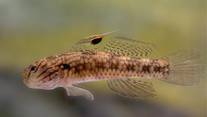 |
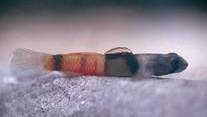 |
|
|
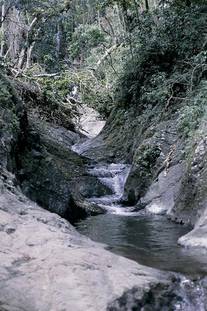 |
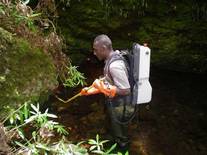 |
|
|